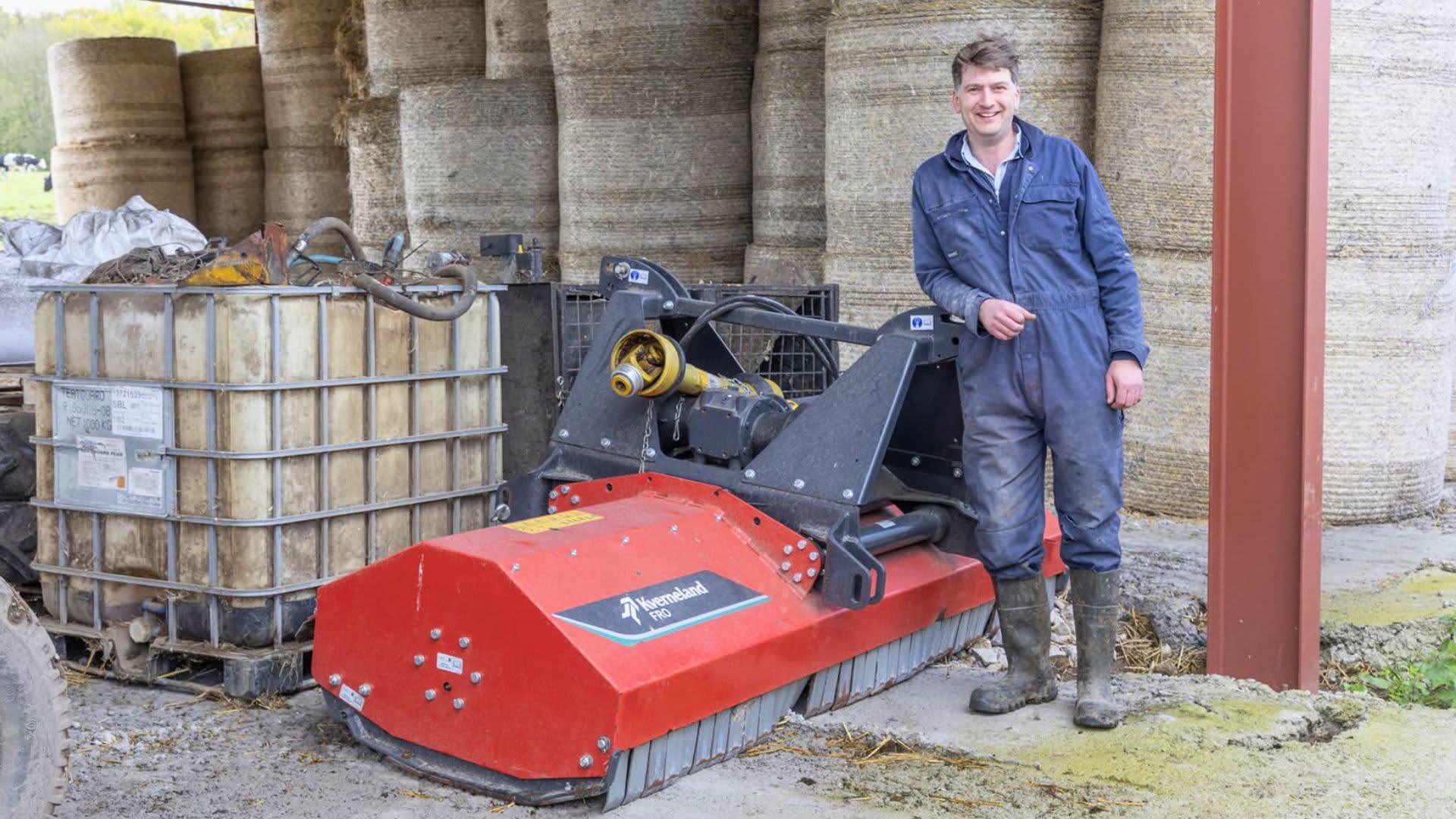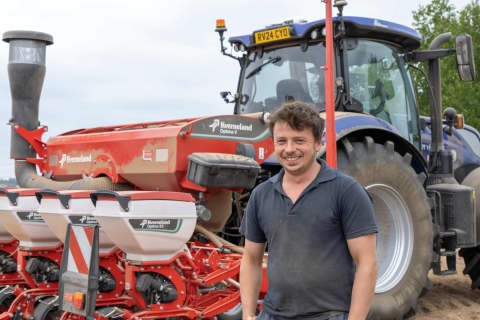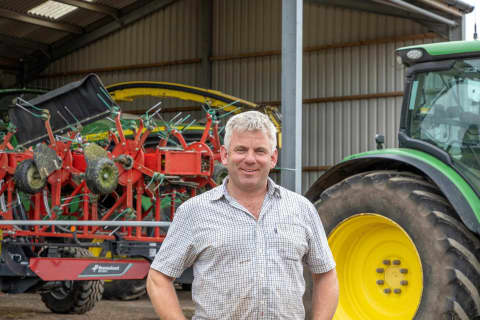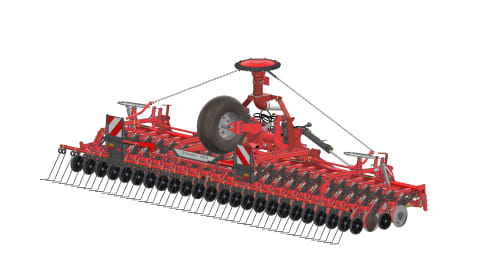His logic was simple – use both Kverneland flail choppers on one tractor where practical or use both choppers independently on the back of two smaller tractors where space and maneuverability can be challenging.
“Compared to a trailed batwing machine, opting for a front/rear combination of linkage-mounted Kverneland flail choppers has brought much more flexibility to our business,” explains David.
Trading as RJ & S McKie, David McKie, and his parents run a mixed farming operation comprising dairy, beef, and cereal enterprises from the 1,000-acre Hound Hill Farm located in Wimborne, England. Milk from its herd is available locally through several vending machines under the Allen Valley Milk brand.
Elsewhere, brother Joe runs a satellite dairy herd on 400 acres in Cumbria, England, which also sits under the RJ & S McKie banner. Collectively, the brothers share knowledge and resources for the benefit of developing their respective farming businesses.
“It’s all about being efficient and choosing the right equipment for what we need to achieve,” he says. “But equally important is having dealers that can provide first-class back-up and support – and C&O Tractors is near the top of our list.
In regards to field topping and stubble management, David says it was his Dad; Richard’s conversation with local dealer C&O Tractors, that led to a different solution at Hound Hill Farm.
“We quickly ruled out a trailed batwing for its physical size,” adds David. “We have a mix of field sizes, and some of the smaller paddocks would be awkward with a large, trailed topper.”
“And having one tractor with front linkage and PTO meant we could consider a front and rear Kverneland flail chopper combination,” he says. “We settled on a Kverneland FRO 280 flail chopper for the front and a Kverneland FHP Plus 250 flail chopper for the rear. This gave us a generous total cutting width of around 5.3m.”
As the mid-sized model in a range of three Kverneland FRO models, the Kverneland FRO 280 flail chopper provides a 2.8m working width. It offers a hydraulic side-shift for working offset and with its double headstock design, can be fit to either end of the tractor without any modifications needed.
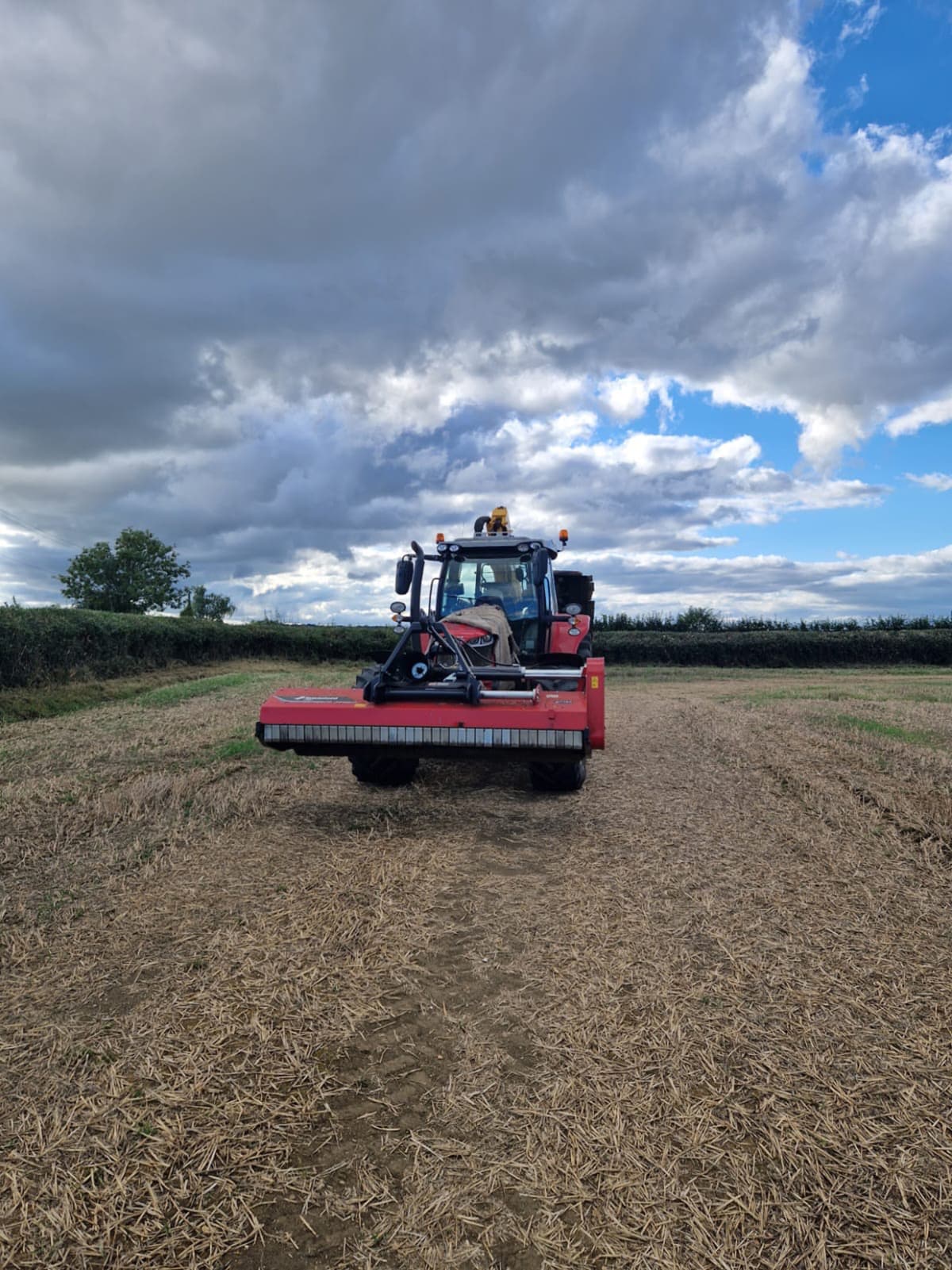
At 2.5m wide, the Kverneland FHP Plus 250 flail chopper is the widest of the three and uses a parallel linkage to achieve a lateral offset. This linkage also means the Kverneland chopper can operate above and below the horizontally, which is useful for mowing ditch banks or embankments.
“We liked the idea of using both Kverneland choppers simultaneously on one tractor in larger fields, making the most of a good work rate,” he says. “But we also have the flexibility of using both on the back of two smaller tractors, where space and maneuverability can be challenging. And with the offset available, we can now do a lot of boundary work that previously would have needed to be done with the hedge cutter.”
David says both the Kverneland flail choppers are equipped with rear rollers, which leave a high-quality finish similar to a mown lawn.
“The quality of the cut is excellent, while the rolled finish leaves a neat and tidy appearance,” he says. “If we’re clearing any overgrown areas with the Kverneland FRO model up-front, it cuts a path for the tractor. Unlike a trailed topper, you don’t have to risk running the tractor in any undergrowth where punctures or other damage can occur.”

